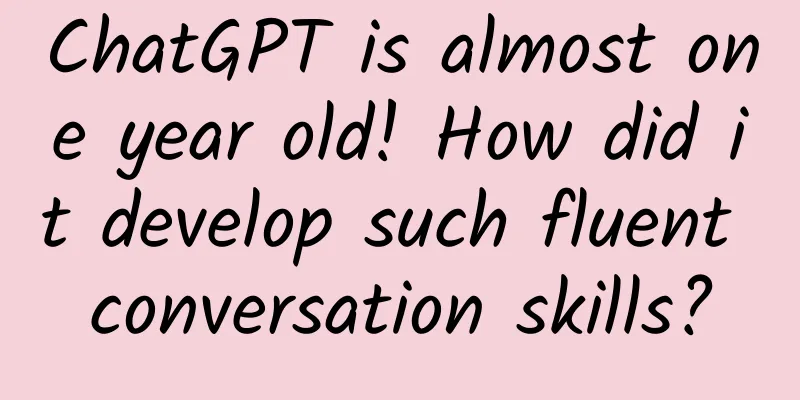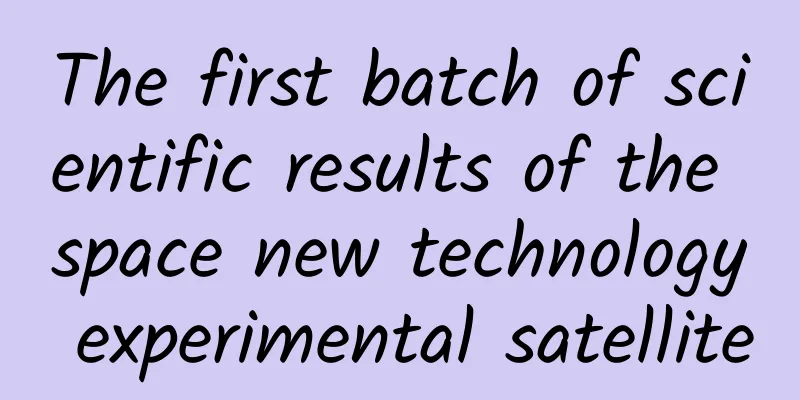ChatGPT is almost one year old! How did it develop such fluent conversation skills?

|
ChatGPT will be one year old in November this year. Artificial intelligence models represented by ChatGPT are iterating at an astonishing speed, and some technology companies even claim that ChatGPT may replace humans in the future. So, what is the principle of ChatGPT? Is it really possible for it to replace humans? Today, I will use examples that everyone is familiar with to let people intuitively understand this seemingly mysterious technology. The "nesting doll" method allows ChatGPT to generate long texts The full name of ChatGPT is Generative Pre-trained Transformer, which means "Generative Pre-trained Transformer". From the name, we can see that it is a pre-trained model that can generate content. What is generated content? The idiom chain game is a kind of generation, which generates the following content based on the previous content. If I say "wait for the tree to..." ChatGPT may generate "rabbit", and if I say "make a feint to the east..." ChatGPT may generate "west". This is the generative ability of the word chain. If we generate a long text word by word, wouldn't it be too slow? This requires the "nesting doll" method, which is to combine each word with the previous content as the new previous content to generate the next word, and repeat this process to generate an article of any length. For example, if we input "守树待" at the beginning, ChatGPT will generate "兔", and then use "守树待兔" as the new previous content to generate the next word. In this way, any long text can be generated by generating and combining a large number of single words. The generated content is influenced by two factors and is not a random answer. So, is the content generated by ChatGPT completely random? The answer is no, because the generated content is affected by two factors: one is the previous context, and the other is ChatGPT's own language model. In simple terms, different models will generate different content with the same context, and the same model with different contexts will also generate different content, just like everyone has their own understanding of what words should be connected after "waiting for the rabbit by the tree". Of course, we also want ChatGPT to generate the content we want. This requires providing ChatGPT with a lot of the content we want, so that it can change its language model through learning, just like repeatedly learning that the word after "守树待兔" should be "猛虎". Over time, after seeing "守树待兔", the first word that comes to our mind is "猛虎". ChatGPT is the same, through learning, we can gradually master the language rules we want. ChatGPT can generate new answers by itself through learning Learning is not a simple memorization, but the ability to draw inferences from one example. If you have trained "waiting for the rabbit by the tree, a tiger", you will know that the next sentence should be "tiger" when you see "helping each other, heroes emerge in large numbers". This is the generalization ability of ChatGPT, which is the ability to apply the rules of learning to answer questions that have never been seen before. This is the same as we can apply the principles through learning to answer new questions. ChatGPT answers questions in the same way. If you provide it with a large number of correct question-answering examples for learning, it will master the method of answering questions of this type, and can then answer new questions it has never seen before. This is different from search engines, which directly look for ready-made answers in the database. ChatGPT understands how to answer questions and can generate new answers on its own. However, ChatGPT's answers are not necessarily correct, because it may generate false content according to the wrong rules, just as we may learn wrong knowledge from wrong examples and produce answers that do not conform to the facts. Therefore, we cannot blindly believe its one-sided words, but evaluate its reliability by asking multiple questions. Thanks to the huge model size and three-stage training method Why can ChatGPT achieve such amazing language generation results? This is due to the huge model size and three-stage training method: First, ChatGPT absorbs hundreds of millions of Internet data for unsupervised pre-training and masters a wide range of language knowledge, then manually designs language interaction templates to regulate its behavior, and finally, through manual questioning, continuous feedback training, and improves creativity. Through such step-by-step training, ChatGPT can exceed our expectations and complete many complex language tasks. As a man-made system, ChatGPT also has limitations. The generated content cannot be trusted completely and needs human supervision and evaluation. Like any technology, it can only be used as an auxiliary tool and should not and cannot replace human creativity and consciousness. It ultimately needs human guidance and use. Let us look at this technological progress positively and rationally, put people first, and benefit society. (The author Feng Run is a member of the Beijing Science and Technology Popular Science Lecture Team and a market and industry researcher at Beijing Experimental Animal Research Center Co., Ltd.) |
<<: From domestication and breeding 1.0 to intelligent design 4.0, this is the power of seeds!
>>: Let’s remember Qian Xuesen together today. This is the best way to commemorate him!
Recommend
62 films directed by Tsui Hark (1979-2018) HD collection Baidu Cloud download
62 films directed by Tsui Hark (1979-2018) HD col...
Spring Festival Marketing: Focus on Online, Breakthrough Offline
Despite the impact of the epidemic, the Spring Fe...
Weilai CEO Li Bin: Only 4% of trips exceed 100 kilometers, and electric vehicles are absolutely sufficient for daily use
Recently, at the 18th Annual Conference of Chines...
Deadly camouflage, color magic, how "cunning" are the insects in the rainforest?
In the remote and mysterious tropical rainforest,...
Guangzhou clothing WeChat applet development, how to create WeChat applet in the clothing industry?
Our lives have become increasingly dependent on t...
Have you ever wondered why the whole is greater than the sum of its parts?
Yang Mingzhe If there is a cake like this on the ...
A senior product operations manager teaches you: How to make a good version analysis report?
In product development, only the development team...
Stop taking calcium tablets every day! Wrong calcium supplementation is secretly causing "stones" to grow in your blood vessels
Many people feel that they are getting older, so ...
I studied more than 100 fission activity cases and summarized 6 experiences!
Since 2015, the traffic dividend of China's m...
What? Turner and Monet paintings can also be used to study air pollution!
Perhaps you will say: Shouldn’t air be colorless ...
How can Alibaba Pictures, which is expected to lose 600 million yuan, support its market value of over HK$30 billion?
Alibaba's plan to make movies has not been go...
Why do clothes that are dried in the shade smell so bad? The reason is...
When the rainy season comes, friends in the south...
IEA: Path to a new era of nuclear energy
The IEA has released a new report, “The Road to a...
If you want to stand out in the competition in 2020, what should brand marketing do?
introduction In an era when traffic dividends are...
Coffee does not produce energy, it is just a transporter of energy.
Coffee is native to north-central Africa and belo...









